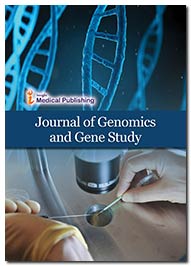Genomic positioning systems for DNA and the tree of life
Max H Garzon
The University of Memphis, USA
Received: June 06, 2022; Accepted: June 13, 2022; Published: June 20, 2022
Abstract
Geographic information systems represent the modern version of the scientific revolution ushered in by the introduction of now standard Cartesian coordinates and analytic geometry in the 1600s. They provide a universal means of communication and computation in a unified system that makes possible identification, comparisons and validations of geographic position, previously unattainable on a global scale. In this talk, the author propose an analogous coordinate system for the far more complex genomic biosphere based on the concept of “genomic” distance enjoying the geometric properties characteristic of geometric distance. The system has several properties: It is universal (applicable to any genome, known or unknown), feasible (computable for every given genome), zoomable (adaptable precision to various scales of resolution) and, more importantly, capable of revealing important functional and structural features of a given genome relative to other genomes. After a brief sketch of the foundations and contrast with earlier approaches, the author illustrate how these two latter features make possible a number of applications in various omics areas, such as molecular phylogenetic, universal genetic marker generation and classification, and comparative whole-genomic analyses on a common framework that may reveal significant commonalities in hitherto disparate taxonomies and procedures. Time permitting; some potential applications will be sketched in some detail, including applications of interest in Transcriptomics, such as molecular systematics, the Tree of Life, and Next-Generation Sequencing.
Open Access Journals
- Aquaculture & Veterinary Science
- Chemistry & Chemical Sciences
- Clinical Sciences
- Engineering
- General Science
- Genetics & Molecular Biology
- Health Care & Nursing
- Immunology & Microbiology
- Materials Science
- Mathematics & Physics
- Medical Sciences
- Neurology & Psychiatry
- Oncology & Cancer Science
- Pharmaceutical Sciences
